Complete Solutions to linked Comprehension Type of chapter ALKENES AND ALKADIENES of Class 11 book with complete answers and questions
| Class 11 | CHEMISTRY |
| Chapter | ALKENES AND ALKADIENES |
| CENGAGE CHEMISTRY | linked Comprehension Type |
| Number Of Questions | 38 |
| Academic Year | 2023-24 |
The structures to two compound `(I)` and `(II)` are given below.
Which statement is correct ?
`F_(2)C=C=CF_(2)(I)` and `F_(2)C=C=C=CF_(2)(II)`02:10View SolutionThe structures to two compound `(I)` and `(II)` are given below. Which statement is correct ?
`F_(2)C=C=CF_(2)(I)` and `F_(2)C=C=C=CF_(2)(II)`06:17View SolutionThe structures to two compound `(I)` and `(II)` are given below.
Which statement is correct ?
`F_(2)C=C=CF_(2)(I)` and `F_(2)C=C=C=CF_(2)(II)`02:39View SolutionA naturally occuring antibiotic called mycomycin `9A)` has the structure as shown below.
`Hoverset(13)(C)-=overset(12)(C)-overset(11)(C)-=overset (10)(C)H-overset(9)(C)H=overset(8)(C)=overset(7)(C)H(overset(6)overset(4)(C)H=overset(5)overset(3)(C)H)_(2)-overset(2)(C)H_(2)overset(1)(C)OOH(A)`
Which statement is correct ?02:32View SolutionA naturally occuring antibiotic called mycomycin `(A)` has the structure as shown below.
`Hoverset(13)(C)-=overset(12)(C)-overset(11)(C)-=overset (10)(C)H-overset(9)(C)H=overset(8)(C)=overset(7)(C)H(overset(6)overset(4)(C)H=overset(5)overset(3)(C)H)_(2)-overset(2)(C)H_(2)overset(1)(C)OOH(A)`
Which statement is correct ?02:33View SolutionA naturally occuring antibiotic called mycomycin `(A)` has the structure as shown below.
`Hoverset(13)(C)-=overset(12)(C)-overset(11)(C)-=overset (10)(C)H-overset(9)(C)H=overset(8)(C)=overset(7)(C)H(overset(6)overset(4)(C)H=overset(5)overset(3)(C)H)_(2)-overset(2)(C)H_(2)overset(1)(C)OOH(A)`
Which statement is correct ?
Stereochemistry at `C-10` and `C-12`, when compound `(A)` is hydrogenated with Lindlar's catalyst and Birch Reduction , rescpectively, is03:36View SolutionCompound `(A)(C_(13)H_(24)O)` is a sex `-` attractant pheromone two molar equivalents of `H_(2)` and is converted to `3-`ethyl`-7-`methyl decan `-1-`ol. On reductive ozonolysis, it gives the following compounds.

`(A)` shows two structural isomers, one structure is `:`
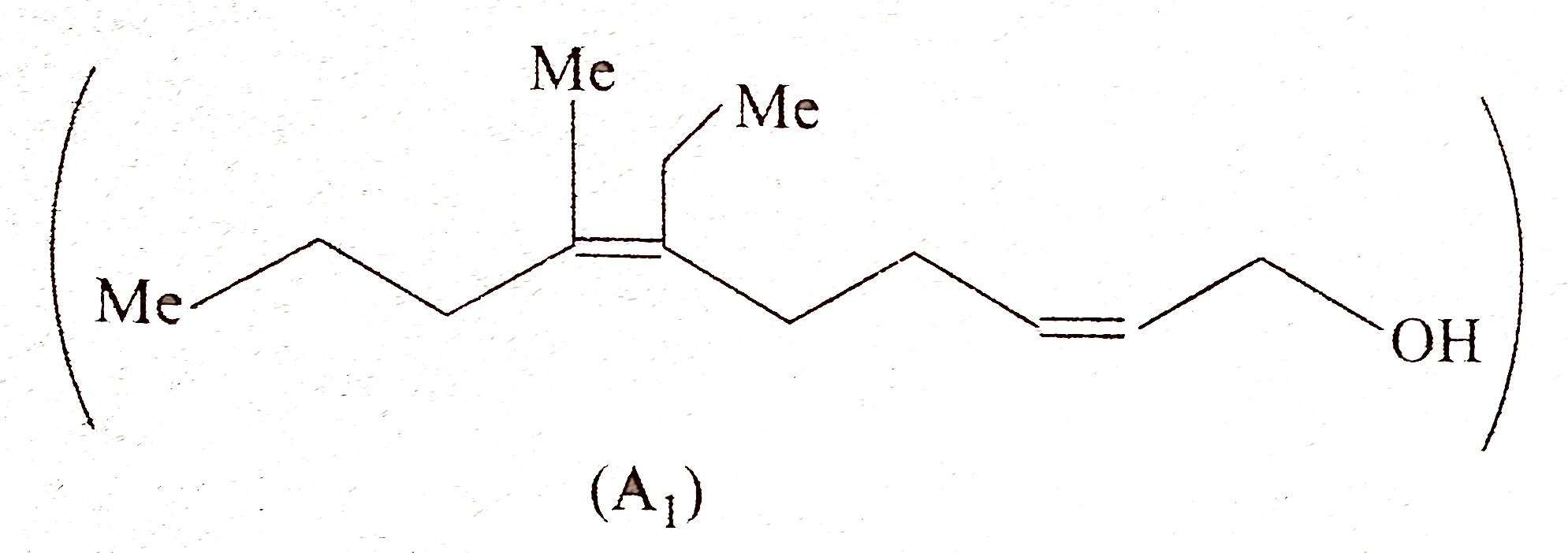
The other structure `(A_(2))` is `:`03:18View SolutionCompound `(A)(C_(13)H_(24)O)` is a sex `-` attractant pheromone two molar equivalents of `H_(2)` and is converted to `3-`ethyl`-7-`methyl decan `-1-`ol. On reductive ozonolysis, it gives the following compounds.

The numberos stereoisomers for `(A)` is `:`04:33View Solution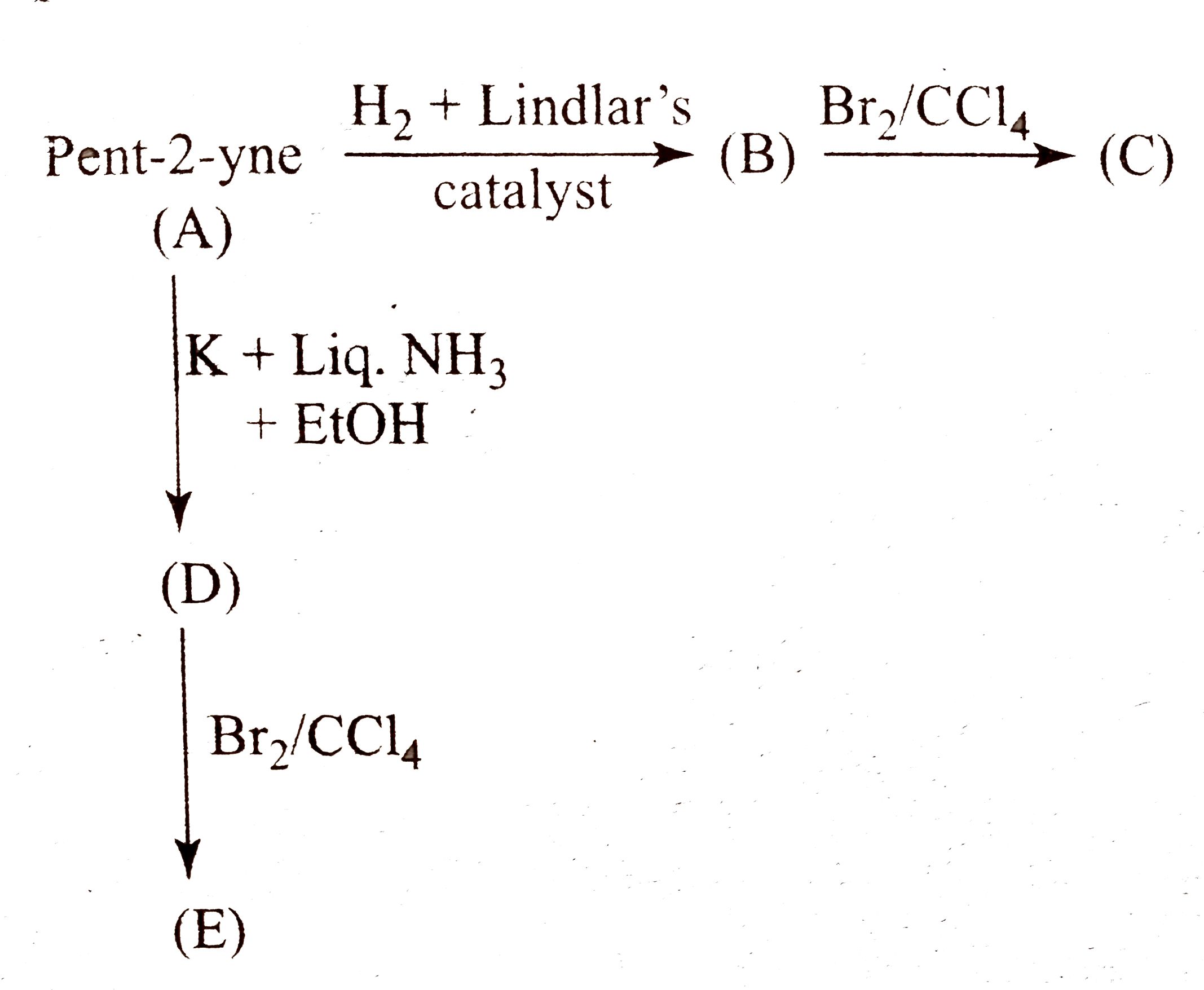
Compound `(B)` and `(D)` are, respectively `:`03:05View Solution
Compound `(C)` and `(E)` are, rescpectively`:`03:57View Solution
The formation of `(B)` and `(D)` takes place, respectively, when `:`02:19View Solution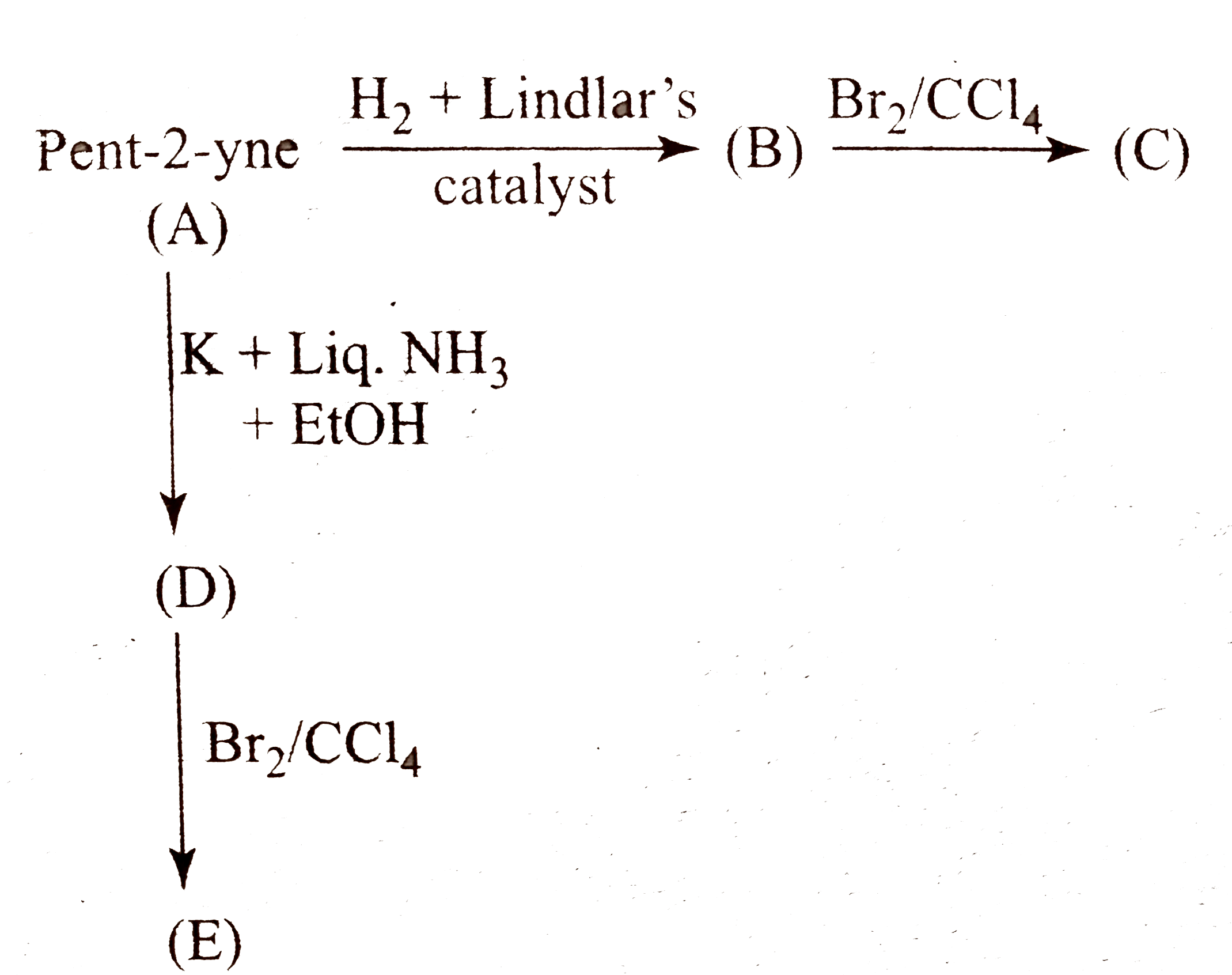
The formation of `(C)` and `(E)` takes place, respectivley, when `:`03:44View Solution
Compound `(A)` is `:`02:55View Solution
Compound `(B)` is `:`03:19View Solution
Compound `(C)` is `:`05:15View Solution
Reagent `(A)` is `:`01:49View Solution
Which of the following connot be used as reagent `(B)` ?02:39View Solution
Reagent `(C)` is `:`03:29View Solution
`(A)` is `:`01:45View Solution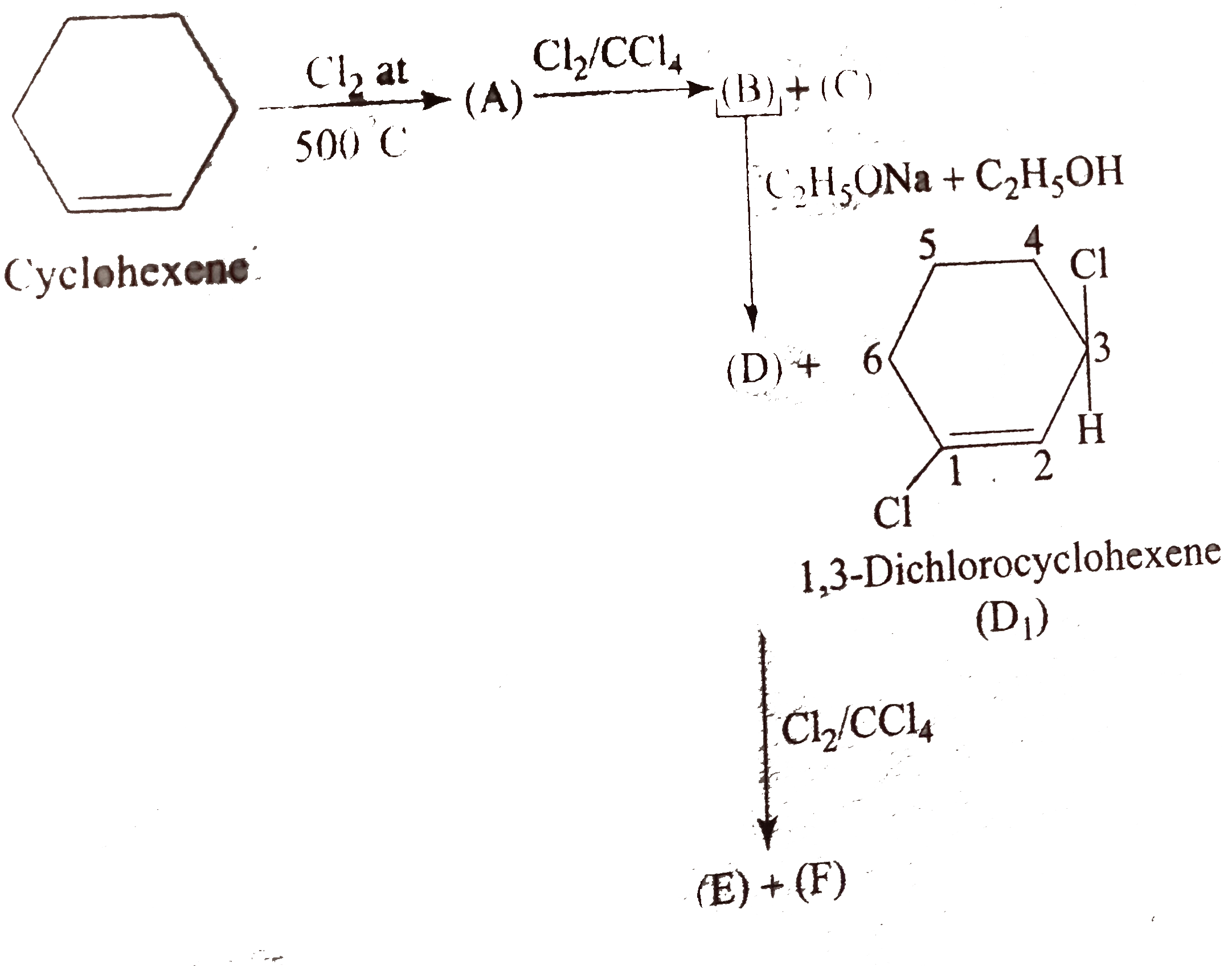
(B) and (C) , respectively, are `:`03:55View Solution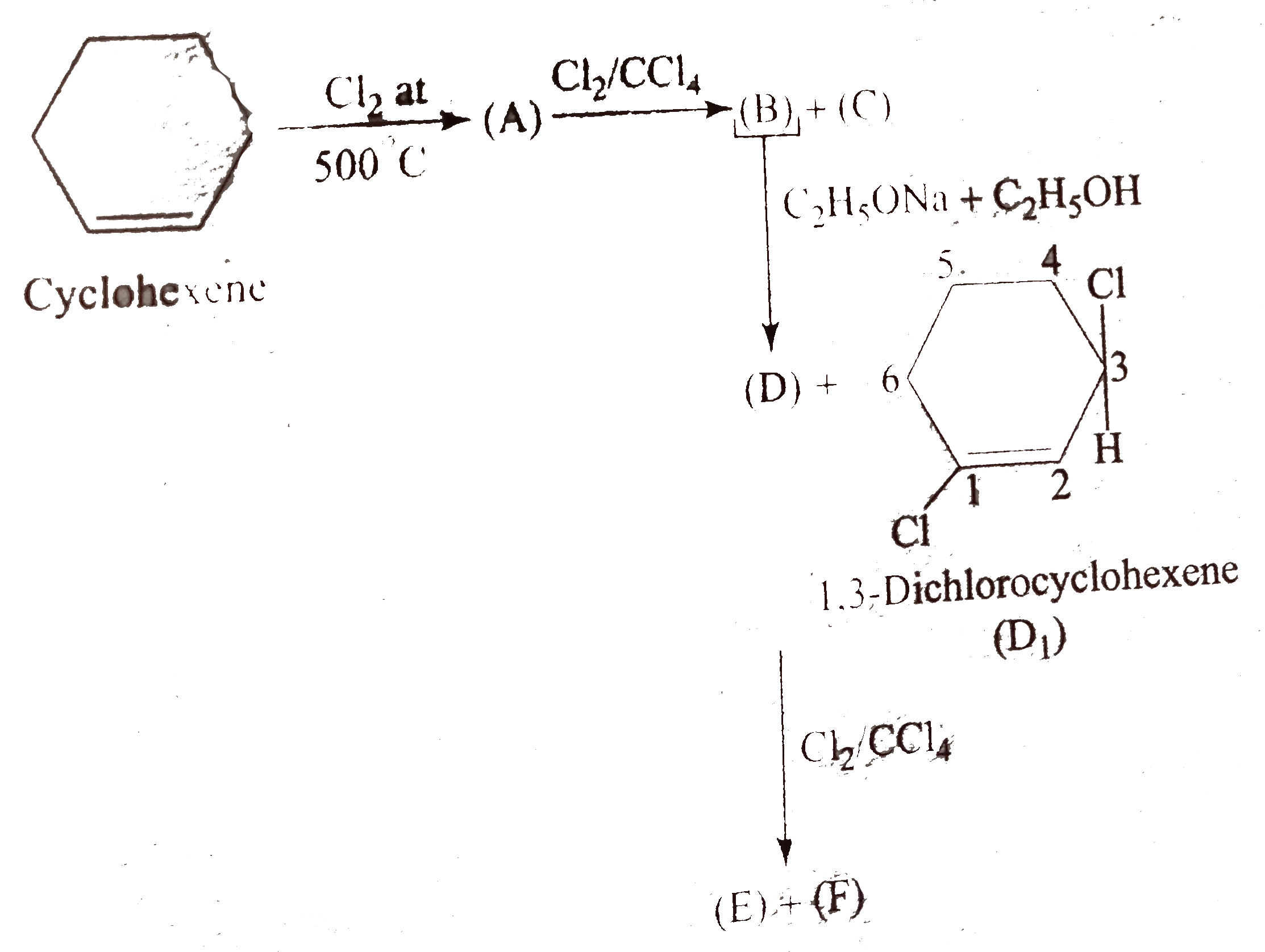
`(D)` is `:`04:01View Solution
`(E)` and `(F)`, respectively, are `:`05:21View Solution
Why does not `(C)` gives `(D)` or `(D_(1))` on treatment with alcoholic `KOH` or with `C_(2)H_(5)ONa+C_(2)H_(5)OH`?04:15View Solution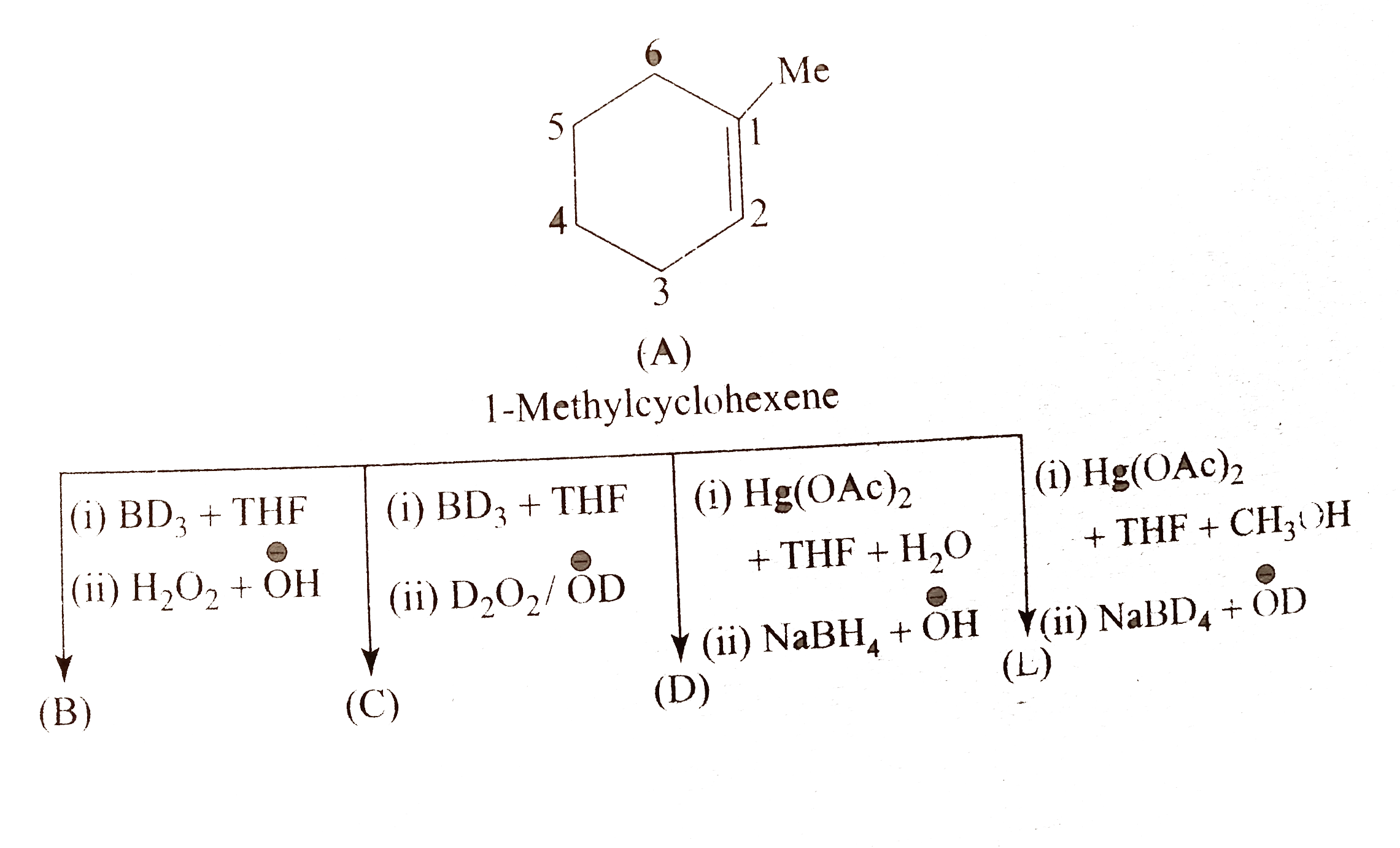
Compound `(B)` is `:`03:44View Solution
Compound `(C)` is `:`04:10View Solution
Compound `(D)` is `:`03:23View Solution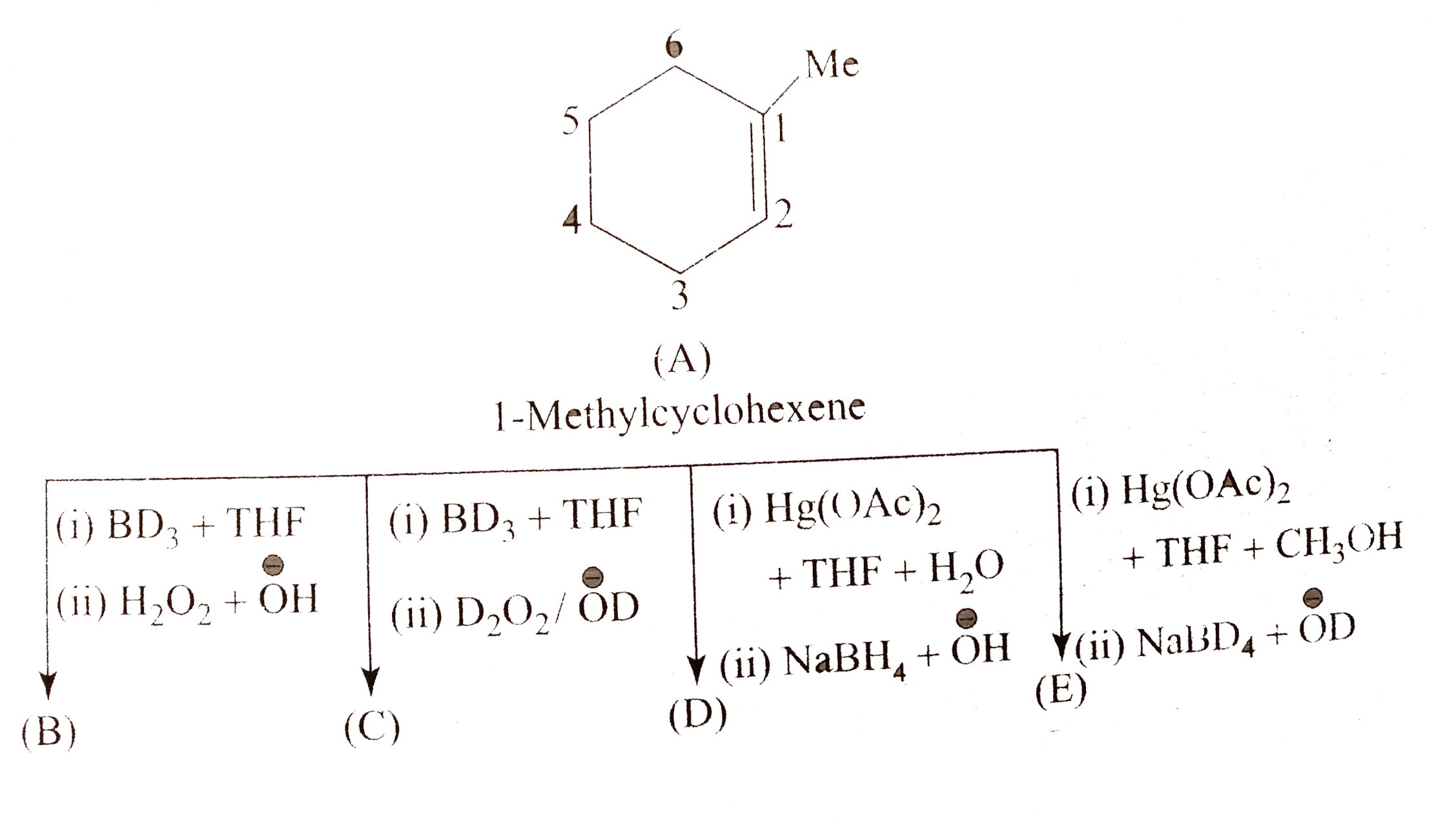
Compound `(E)` is `:`04:28View SolutionWhich of the following is true regarding the hydroboration oxidation of alkene ?
03:02View SolutionWhich of the following are true regarding hydroboration of alkene `?(` More than one correct statements . `)`
04:56View SolutionWhich is the wrong statement about oxymercuration `-` demercuration `?`
04:50View Solution
Which of the wrong statement in the Diels `-` Alder reaction `(A)` with `(B)` ?03:38View Solution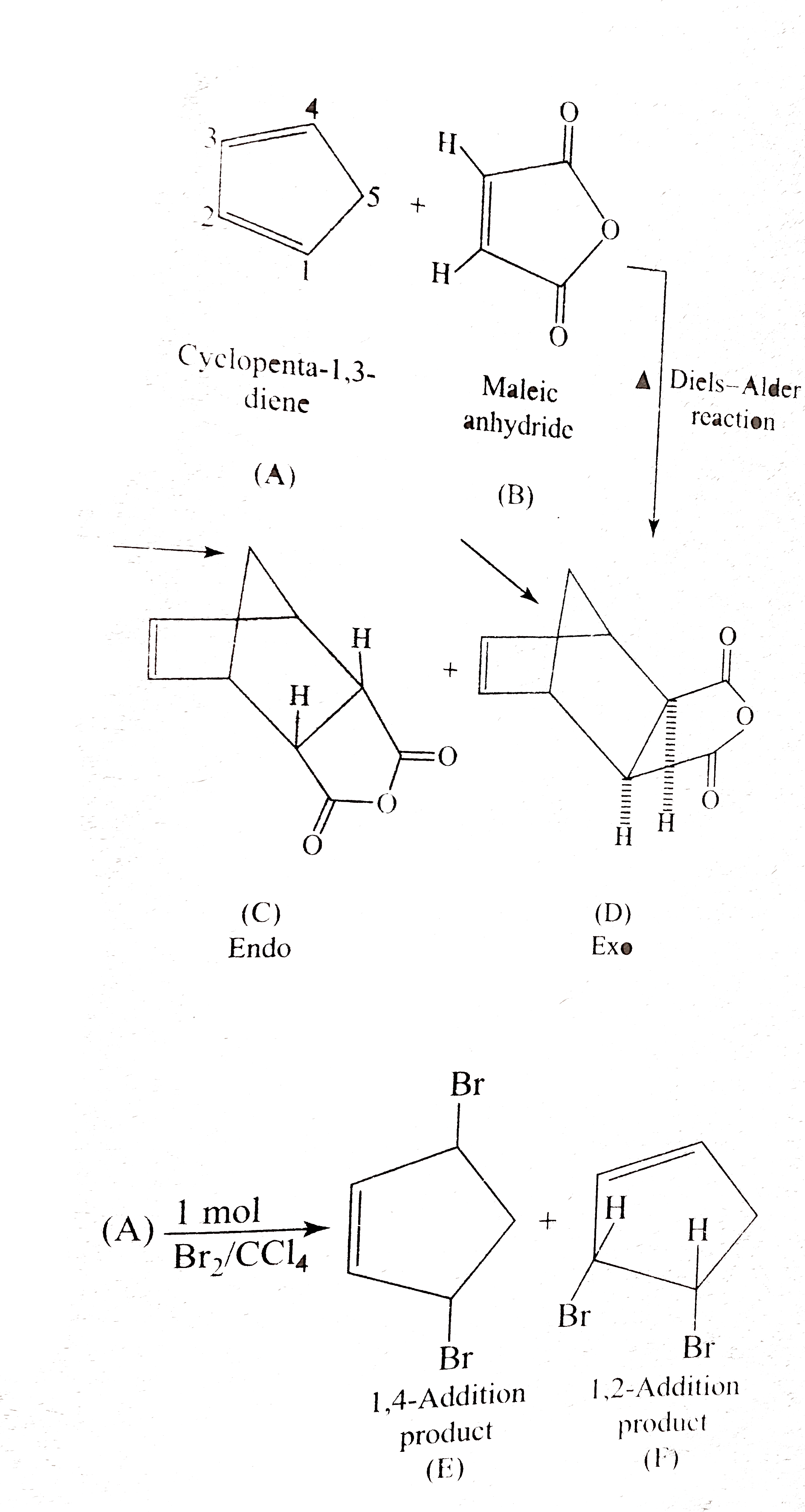
In the reaction of `(A)` to form `(E)` and `(F)`, which statement is wrong `?`04:22View Solution
Which statement is wrong `?`05:05View SolutionStabilities of alkanes can be compared by converting these compounds to a common product and comparing the amount of the heat given off. One possibility would be to measure the heat of combustion from converting alkenes to `CO_(2)` and `H_(2)O` . The heats of combustion are of large values and measuring small difference in these large numbers is difficult. Alkene of the lowest heat of combustion among isomeric alkenes is of the lowest energy and is most stable.
Th stability of alkenes is often compared by meansuring the ehat of hydrogenation `9` heat given off, `Delta H_(h)^(@)` during catalytic hydrogenation. The heat of hydrogenation is in smal number, which provides more accurate energy difference.
For a compound containing more than one double bond, `Delta_(h)^(@)` is the sum of heat of hydrogenation of individual double bonds. For non `-` conjugated diens, this additive relatioship is found to hold. For conjugated dienes, however, the measured value is slightly lower than expected. Cumulated dienes, which are even less stable than non `-` conjugated dienes.
The more stable is the alkene, lower is the heat of combustion and heat of hydrogenation. More highly substituted double bonds are usually more stable. In case of cyclokanes, compounds having higher angle strin are less stable.
In which of the following is `Delta H^_(h)^(@)` the maximum ?03:52View SolutionStabilities of alkanes can be compared by converting these compounds to a common product and comparing the amount of the heat given off. One possibility would be to measure the heat of combustion from converting alkenes to `CO_(2)` and `H_(2)O` . The heats of combustion are of large values and measuring small difference in these large numbers is difficult. Alkene of the lowest heat of combustion among isomeric alkenes is of the lowest energy and is most stable.
Th stability of alkenes is often compared by meansuring the ehat of hydrogenation `9` heat given off, `Delta H_(h)^(@)` during catalytic hydrogenation. The heat of hydrogenation is in smal number, which provides more accurate energy difference.
For a compound containing more than one double bond, `Delta_(h)^(@)` is the sum of heat of hydrogenation of individual double bonds. For non `-` conjugated diens, this additive relatioship is found to hold. For conjugated dienes, however, the measured value is slightly lower than expected. Cumulated dienes, which are even less stable than non `-` conjugated dienes.
The more stable is the alkene, lower is the heat of combustion and heat of hydrogenation. More highly substituted double bonds are usually more stable. In case of cyclokanes, compounds having higher angle strin are less stable.
Which statement is false `?`03:39View SolutionStabilities of alkanes can be compared by converting these compounds to a common product and comparing the amount of the heat given off. One possiblitiy would be to measure the heat of combustion from converting alkenes to `xo_(2)` and `H_(2)O` . The heats of combustion are of large values and measuring small difference in these large numbers is difficult. Alkene of the lowest heat of combustion among isomeric alkenes is of the lowest energy and is most stable.
Th stability of alkenes is often compared by meansuring the ehat of hydrogenation `9` heat given off, `Delta H_(h)^(@)` during catalytic hydrogenation. The heat of hydrogenation is in smal number, which provides more accurate energy difference.
For a compound containing more than one double bond, `Delta_(h)^(@)` is the sum of heat of hydrogenation of individual double bonds. For non `-` conjugated diens, this additive relatioship is found to hold. For conjugated dienes, however, the measured value is slightly lower than expected. Cumulated dienes, which are even less stable than non `-` conjugated dienes.
The more stable is the alkene, lower is the heat of combustion and heat of hydrogenation. More highly substituted double bonds are usually more stable. In case of cyclokanes, compounds having higher angle strin are less stable.
Arrange the following compounds according to their increasing heat of combustion. `I.` `1-`Butene
`II.` cis `-2-`Butene
`III.` trans `-2-`Butene
`IV.` `2-` Methyl propene04:17View SolutionStabilities of alkanes can be compared by converting these compounds to a common product and comparing the amount of the heat given off. One possiblitiy would be to measure the heat of combustion from converting alkenes to `xo_(2)` and `H_(2)O` . The heats of combustion are of large values and measuring small difference in these large numbers is difficult. Alkene of the lowest heat of combustion among isomeric alkenes is of the lowest energy and is most stable.
Th stability of alkenes is often compared by meansuring the ehat of hydrogenation `9` heat given off, `Delta H_(h)^(@)` during catalytic hydrogenation. The heat of hydrogenation is in smal number, which provides more accurate energy difference.
For a compound containing more than one double bond, `Delta_(h)^(@)` is the sum of heat of hydrogenation of individual double bonds. For non `-` conjugated diens, this additive relatioship is found to hold. For conjugated dienes, however, the measured value is slightly lower than expected. Cumulated dienes, which are even less stable than non `-` conjugated dienes.
The more stable is the alkene, lower is the heat of combustion and heat of hydrogenation. More highly substituted double bonds are usually more stable. In case of cyclokanes, compounds having higher angle strin are less stable.
If the heat of hydrogenation of cyclooctene is about `23 k cal mo^(-1)`, what would be the probable `DeltaH_(b)` or `1,3,5,7-`cyclooctatetraene ?03:02View SolutionStabilities of alkanes can be compared by converting these compounds to a common product and comparing the amount of the heat given off. One possiblitiy would be to measure the heat of combustion from converting alkenes to `xo_(2)` and `H_(2)O` . The heats of combustion are of large values and measuring small difference in these large numbers is difficult. Alkene of the lowest heat of combustion among isomeric alkenes is of the lowest energy and is most stable.
Th stability of alkenes is often compared by meansuring the ehat of hydrogenation `9` heat given off, `Delta H_(h)^(@)` during catalytic hydrogenation. The heat of hydrogenation is in smal number, which provides more accurate energy difference.
For a compound containing more than one double bond, `Delta_(h)^(@)` is the sum of heat of hydrogenation of individual double bonds. For non `-` conjugated diens, this additive relatioship is found to hold. For conjugated dienes, however, the measured value is slightly lower than expected. Cumulated dienes, which are even less stable than non `-` conjugated dienes.
The more stable is the alkene, lower is the heat of combustion and heat of hydrogenation. More highly substituted double bonds are usually more stable. In case of cyclokanes, compounds having higher angle strin are less stable.
The wrong option among the following statements is `:`04:37View Solution
linked Comprehension Type questions and complete solutions for chapter ALKENES AND ALKADIENES of CENGAGE CHEMISTRY (ENGLISH) of Class 11
